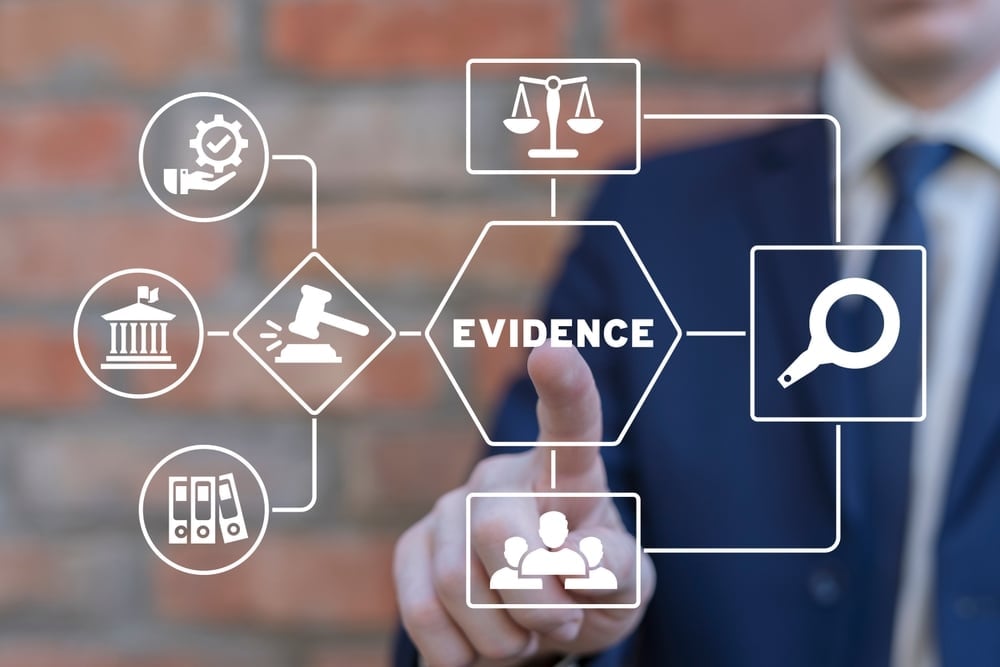
 Request FREE consultation - 1866-758-4529
Request FREE consultation - 1866-758-4529 
When you’re seeking compensation after an accident, the evidence in a Texas personal injury case is what wins the case. Courts and insurance companies rely on documentation, testimony, and expert analysis to determine liability and damages.
Every piece of evidence helps paint a picture of what happened and who’s to blame. Below is a breakdown of the most critical evidence that impacts personal injury claims in Texas.
One issue that is important when collecting evidence is to start your investigation early. Vital relevant evidence can be destroyed intentionally or unintentionally. Vehicles can be repaired, video erased, and the crash scene changed.
Often, with commercial vehicle accidents, insurance companies dispatch attorneys and investigators to the scene to help protect themselves against a claim. Taking quick action and getting a personal injury attorney can level the playing field and enable you to gather evidence that might otherwise be lost.
Medical records are often the backbone of a personal injury case. They provide an objective timeline of injuries, treatments, and the long-term effects of the accident. Hospital records, diagnostic imaging, prescriptions, and rehab notes show the severity of the injuries and help link the accident to the harm.
Consistent treatment history builds credibility while gaps in care raise questions about the severity of the injuries.
Police reports, incident reports, and other official documents are key to confirming the facts of the accident. In Texas, law enforcement accident reports often include witness statements, officer observations, and initial findings of fault. While not all of a crash report may be admissible in Texas, the factual observations of the officers at the scene are almost always admitted. These documents are considered very persuasive by insurance companies and courts.
Visual evidence is proof that words can’t match. Photos of the accident scene, vehicle damage, skid marks, weather conditions, and visible injuries immediately after the accident provide a strong foundation for proving negligence. In many cases, surveillance footage, dashcam recordings, or cellphone videos capture the events leading up to the accident and show what happened.
Neutral witnesses strengthen a personal injury claim by providing independent accounts of the incident. Eyewitness testimony can confirm reckless behavior, traffic violations, or hazardous conditions. Jurors often give a lot of weight to unbiased observers who corroborate the victim’s version of events.
Expert testimony explains complex issues and adds credibility to a case. Medical professionals can explain the long-term effects of the injuries, while accident reconstruction specialists can analyze speed, braking, and collision impact to show how the crash happened. Financial experts can project future losses, including diminished earning capacity, based on the victim’s condition.
Economic damages make up a big part of many personal injury claims. Pay stubs, tax returns, and employer verification letters show lost income and benefits during recovery. Documentation of reduced work hours, inability to return to the same job, or permanent disability strengthens claims for lost future earnings.
In today’s world, digital evidence is key. Cellphone records can show if a driver was texting or making calls at the time of the crash. Commercial truck accidents often involve electronic logging device (ELD) data, GPS tracking, and black box recordings that show speed, braking, and driver fatigue. This data is hard proof of negligence that can’t be disputed.
Repair estimates, mechanic invoices, and photos of damaged property show the severity of the collision. Vehicle damage reports often support claims about the force of impact and correlate with physical injuries suffered. For product liability or premises cases, evidence of defective equipment or unsafe property conditions is critical.
Non-economic damages like pain, emotional distress, and loss of quality of life require documentation. Journals, testimony from family members, and professional evaluations from psychologists or therapists show the daily struggles caused by the accident. These accounts humanize the case and show the full extent of the harm.
Safety records can be a powerful source of evidence in a Texas personal injury case. For example, with truck accident lawsuits, maintenance records, daily inspection reports, drivers’ logs, and safety training can show violations of safety standards.
A clear chain of custody ensures critical evidence remains admissible in court. From photographs to medical samples, proper handling and preservation prevent challenges from opposing counsel. Spoliation or destruction of evidence can weaken a case or even result in sanctions.
The most important evidence in a Texas personal injury case is not one piece but the collective strength of medical documentation, official reports, witness statements, and expert analysis. Together, these elements create a narrative that proves liability and maximizes recovery for victims.
A well-prepared case with strong evidence puts injured Texans on equal footing with big insurance companies and negligent parties.
More than 80% of all cases are settled before a trial. Preparing your case as if it were to be tried is the method we use to secure maximum compensation.
Our nationally recognized truck accident lawyer intentionally limits the number of cases that we accept to provide the best possible service. We employ a quick response team in appropriate cases because we can move quickly, or the odds of collecting important evidence before it gets away are heightened.
For example, getting evidence in a commercial vehicle accident, we would download the black box data from the truck to determine speed and braking before the collision. We would also inspect the commercial vehicle to get evidence to secure maximum compensation.
For over 40 years, our truck accident attorney in Houston, TX, has won maximum compensation for accident victims in Houston, Harris County, and across Texas.
Call us at (281) 893-0760 for a Free case evaluation.